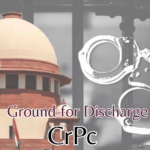We live in a country where the road and transport network form the second-largest network across the work which approximately contain around 5.90 million kilometers. This is big in number. Having such big numbers of road intensity and population, it is important to ensure that there are well-defined policies in place to both regulate the users and protect the non-users. Another important thing to be balanced by the regulators is the rules relating to users of roads and the beneficiaries. This means that the economic side of such regulations should not hurt any person. This article will look into the only law which deals with traffic regulation in India which is the Motor Vehicles act of 1988.
Indian Traffic laws:
The first law to form part of traffic laws in India was the erstwhile Indian Motor Vehicles 1914, which was later replaced by the Motor Vehicles act of 1939. These two laws form Pre-1988 motor vehicle regulations. In the year 1987, the Supreme Court of India has made particular suggestions while interpreting the 1939 act, which formed the basis for the parliament to propose and modify specific changes to the 1939 act, which received its assent in the year 1988 and came into force on July 1st, 1989. This act was nothing but the consolidated and rationalized form of its precursor laws and rules.
Since then, the Motor Vehicles act of 1988 has been amended several times in order to suit the developments and changes that occur in the road standards and measures. One such important amendment was introduced in the year 2017, which was lapsed due to general elections, but received its assent in the year 2019 and came into force in 2020. Currently, this amended act is the sole law we follow and forms the skeleton law for the state governments to enact respective rules.
Motor Vehicles act of 1988 (amended in 2019):
The preamble of the act states that it is an act to consolidate and make necessary amendments to the laws which are relating to motor vehicles. The act contains almost 217 sections with fifteen chapters solely dedicated to each aspect of traffic management, starting with the provisions relating to licensing of motor vehicles, duties and restrictions of drivers of motor vehicles in India till the constitution of the claims tribunal for the purpose of adjudication and determination of compensation to the affected parties or the victims.
Let us look into a few of the important provisions within the motor vehicles act of 1988.
Important provisions of the act, 1988:
What is a motor vehicle?
In order to understand each chapter of the act, it is important to define the terms that are instituted in the same. One such definition has been provided under section 2(28), which defines ‘Motor Vehicle’. It states as follows,
“motor vehicle” or “vehicle” means any mechanically propelled vehicle adapted for use upon roads whether the power of propulsion is transmitted thereto from an external or internal source and includes a chassis to which a body has not been attached and a trailer, but does not include a vehicle running upon fixed rails or a vehicle of a particular type adapted for use only in a factory or in any other enclosed premises or a vehicle having less than four wheels fitted with engine capacity of not exceeding twenty-five cubic centimeters
Licensing of drivers:
Chapter 2 of the act deals with licensing of drivers of motor vehicles. Section 3 of the act necessitates each driver of a motor vehicle have an authorized license to drive in any public place. Such licenses shall differ according to the kind of vehicle a person drives. Section 4, which is read along with section 3, provides the age limit for any person to drive a vehicle that is not less than 18 years. Section 6 imposes restrictions on the persons holding the license, which includes the prohibition of lending one’s license to be used by another. The procedure for obtaining a driving license has been provided under section 9 of the act. Such licenses shall be renewed, revoked, and suspended under sections 15, 16, and 21 of the act by the concerned authority as per the provisions. Chapter 2 also empowers the central and state governments to make rules relating to licensing as required.
Registration of Motor Vehicles:
Chapter 4 forms an important part when it comes to the applicability of other provisions of the act such as claims, licensing, etc. It deals with the necessity of driving registered motor vehicles in public places under section 39 and also gives the procedure and ways to register the motor vehicle by the owner and to have such certificate of registration. Section 41 prescribes the way of registration of respective vehicles. Section 46 enables the owner to make just one registration of his/her vehicle anywhere in India. The act also enables the registration authority to refuse the registration under 45 if the rules and compliances of the act have not been complied with properly.
Chapter 5 deals with the control of transport vehicles, including the provision of certain vehicles’ permits within certain jurisdictions. Section 66A, which was introduced in 2019, allows the union government to frame a national transportation policy according to the objects and provisions of this act. State governments have been provided with the power to regulate the control of transport vehicles. Section 84 provides for general conditions that would attach to each permit.
Control of Traffic:
Section 112 to 139 under Chapter 8 of the act comprehensively provides for control of traffic in India, which includes provisions on the limit of speeds on the roadways, several duties on the drivers while driving, and their liabilities in cases of accident.
Few of the duties of drivers under 1988 are,
- Duty to produce license and certificate of registration whenever asked to,
- Duty to wear a helmet,
- Duty to obey all traffic rules,
- Duty of owner to provide information,
- Duty of driver in case of accident and injury.
Claims Tribunal:
Chapter 12 of the act empowers the government to establish a claims tribunal for any person to get compensation in cases of injury suffered by him. One of the significant changes that the 2019 amendment brought was the constitution of the Motor Vehicle accident fund under section 164B, which also helps to facilitate the compulsory insurance cover for all the persons using the roadways in India. Compulsory insurance under section 146 of the act has also been another move that the 2019 amendment brought, which helps to receive the compensation amount by any person related to the sufferer of the road accident.
National Road Safety Board:
Section 215B of the act provides for the establishment of a road safety board at the national level by the union government to advise the state and union government on all the aspects related to road safety and traffic regulations in India, including the promotion of new vehicle technology.





